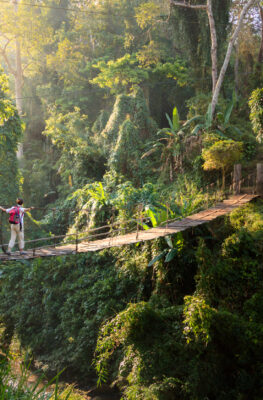Published on September 25, 2018
Taste of Southeast Asia: Dining in Myanmar
Welcome back to ASEAN’s food tour of Southeast Asia: Taste of ASEAN. We are traveling the region and learning about the culinary traditions of each country. Food is a major highlight of traveling to Asia and we want to make sure that visitors know the depth of our local cuisines. Get ready to have some amazing dishes during summer vacations and taste the tropics.
Join us as we explore the sweet and savory favorites of Southeast Asia and name the best local restaurants serving each dish!
Myanmar Cuisine
Nestled between the Indian subcontinent, Laos and Thailand to the east, and China to the north, Burma (officially Myanmar) is yet another country of Southeast Asia that boasts a cuisine made unique by multiple influences. Local ingredients stand strong since Burmese food is itself the shared cuisine of hundreds of ethnically diverse communities. From the majority Bamar people to theKachin, Kayah, Kayin, Chin, Mon, Rakhine and Shan this food is full of spices and unique flavor combinations.
Travelers on summer vacations will enjoy mild Burmese curries, sour and tangy salads, pungent ngapi fermented seafood paste, fresh vegetables, soft noodles, crunchy fried dough, and sweet tropical fruits to round out the meals. While Buddhists avoid beef and Muslims avoid pork, most people settle on fish and seafood as a main protein thanks to an uninterrupted 1,930 km of coastline along the Andaman Sea. Avoiding the intense sweetness and spiciness of their neighbors, the Burmese palate is more balanced, tending towards the pungent and oily flavors. Meals are served with rice, noodles, and mains surrounded by plenty of small complimentary side dishes. Tables are full, and eating is a communal activity to be enjoyed in groups. Let’s explore two of Burmese cuisines most famous dishes.
Mohinga
Burma’s breakfast is a stew of fish curry and plenty of toppings called mohinga. Served everywhere from roadside stands in Yangon to upscale restaurants in Mandalay, this bowl brims with playful textures. There are thin rice noodles for bounce, boiled eggs, buthee kyaw crunchy gourd fritters, fresh herbs, diced banana blossom, and a rich broth that warms the stomach. Add dried chili peppers and a squeeze of fresh lime for the perfect seasoning. If one bowl doesn’t fill you up, don’t be shy! Get more broth, noodles, and another egg at a discount price and you will be ready for a post-breakfast nap back at the hotel before sightseeing.
Myaungmya Daw Cho Mohinga in Yangon has a lighter broth and serves their mohinga with plenty of noodles to fill you up for cheap. Min Thi Ha Tea Shop in Mandalay is popular for all their noodles, including a solid mohinga. They offer a small menu in English, though the prices remain reasonable for locals. If you are feeling adventurous before your summer vacations arrive, try making your own version at home using this recipe from MiMi Aye, a Burmese food blogger based in the UK.
Lahpet thoke fermented tea leaf salad is one of the world’s most unique dishes. A signature flavor exclusive to Burma, this is the only place widely known to eat tea leaves. Green tea plants native to the Shan State and Mandalay regions are picked each year just before rainy season at the peak of leaf growth. The quality leaves are set aside for pickling while the rest are dried to make yei-nway gyan, a mild green drinking tea. The food leaves are steamed until saturated and packed into large vats for short fermentation. The tea develops a slight tang and takes on the consistency of delicate cooked spinach. This mixture is mixed with a wide variety of fresh and dried ingredients to become a thoke or Burmese salad.
Typical items for lahpet include dry-fried garlic slices, toasted butterfly beans, peanuts, chickpeas, sesame seeds, dried shrimp, preserved ginger, shredded coconut, and other dry goods that give the salad incredible crunch. Fresh ingredients include small Asian chilis, tomatoes, cabbage, cilantro, and seasonal local produce that lend even more snap to every bite. The flavor of the salad is unlike any other food from Asia or the Western world: salty, fresh, umami, and wildly addicting. Paired with rice and curry, it makes a complete Burmese meal. Order lahpet thoke at literally every opportunity and get familiar with the variations on this singular meal.
From the temple grounds of Bagan to the streets of Yangon, delicious Burmese food is available at every price range. Burmese food is just starting to have an international following, travelers to Southeast Asia will understand the immediate appeal.
Will you stay with us for the rest of this food journey? The Taste of ASEAN continues our trip through Southeast Asia, and each experience is just as delicious as the last!






